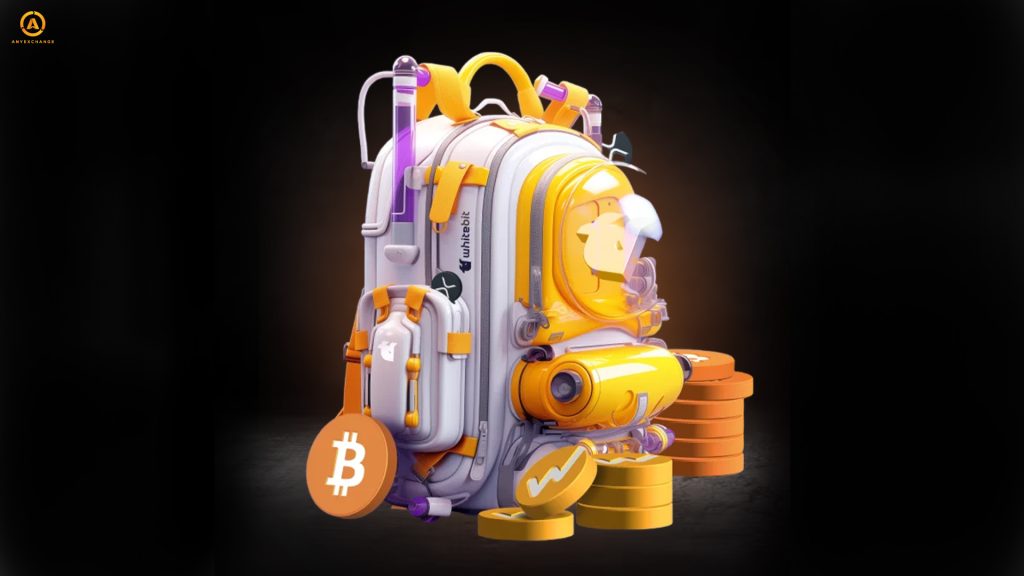
You are probably familiar with the phrase “Don’t put all your eggs in one basket”. If we interpret it in terms of financial strategies, it means something like this: “An experienced investor does not put all his money in one asset”.
Experienced crypto traders and investors do not work with one asset, but build an investment portfolio that includes several cryptocurrencies. And the correct distribution of funds among them allows you to reduce risks and increase the potential for profitability.
Let’s take a closer look at how professionals choose a cryptocurrency for a portfolio, what types of crypto portfolios are most common, and what you need to pay attention to when creating them in order to minimize risks.
What is a cryptocurrency investment portfolio?
A cryptocurrency portfolio is a set of digital assets in which an investor or trader has invested funds with the expectation of making a profit. Coins and tokens are purchased on centralized or decentralized cryptocurrency exchanges, P2P or OTC cryptocurrency trading platforms, and then stored in non-custodial or exchange crypto wallets. In other words, if an investor owns more than one digital asset at a time, he or she can be considered to have created his or her own cryptocurrency portfolio.
Types of cryptocurrency portfolios

There are three main types of cryptocurrency portfolios: by investment horizon, by risk profile and according to the balance.
By investment horizon
The investment horizon is a fundamentally important point when building a crypto portfolio. Cryptocurrencies have different levels of volatility, just as the potential for value growth varies from asset to asset depending on the time interval. Long-term investment strategies are applicable to ever-growing cryptocurrencies with high liquidity and resistance to market downturns. Short-term is for assets with high volatility. They require quick response and constant involvement of the investor or trader in the portfolio management process. The shorter the investment horizon, the more often the investor needs to rebalance the portfolio.
There are three types of crypto portfolios based on investment horizon:
- Short-term. The investment horizon is two weeks to two months.
- Medium-term. The investment horizon is from two months to one year.
- Long-term. Characterizes portfolios with an investment horizon of one year to 5+ years.
By risk profile
This classification is based on the assessment of cryptocurrency risks and divides crypto portfolios into conservative, moderate and aggressive. An investor’s awareness of their risk tolerance and understanding of their investment goals is very important when creating a list of assets they are willing to inсlude in their portfolio. Therefore, an investor should determine his or her risk profile as accurately as possible before investing any money.
Let’s take a closer look at this portfolio classification:
According to the balance
Investment cryptocurrency portfolios can be balanced or unbalanced. Unbalanced portfolios are characterized by the fact that they do not follow the rules of diversification. As a rule, this happens when the investor does not use a systematic approach and does not regularly monitor his assets. They simply sell the asset that has risen in price, transfer the money to fiat and wait for a favorable opportunity when some cryptocurrency becomes cheaper to invest in.
Owners of balanced portfolios try to maintain the original investment structure by regularly rebalancing. Diversification is the main rule to minimize risks. When properly managing a cryptocurrency portfolio, an investor or trader distributes funds among different assets with different characteristics. The main task of diversifying a crypto portfolio is to divide assets into high-risk, medium-risk and low-risk assets. It is clear that low-risk assets will bring less income in the short term. However, they will provide the basis for achieving an optimal ratio of profitability to risk and will not allow the investor to burn out. Despite the price fluctuations of individual coins, a diversified portfolio will remain stable, offsetting losses from a decline in one asset with the profitability of others.
Cryptocurrency categories for portfolio building

The number of cryptocurrencies is constantly growing, as well as the number of categories into which they are divided according to their unique characteristics. For example, the popular tracker CoinMarketCap divides coins into more than 200 categories, and CoinGecko — into more than 100. There are DePin, DeFi, SocialFi tokens, Meme tokens, AI tokens, RWA, Gaming, Play-to-Earn and many others. However, a more general categorization is usually used when building crypto portfolios:
What factors should be taken into account for the proper formation of a cryptocurrency portfolio?

Different volatility
Different cryptocurrencies have different volatility amplitudes. Less liquid cryptocurrencies have higher volatility, while more liquid cryptocurrencies have lower volatility. The higher the market capitalization, the better the liquidity indicators of the cryptocurrency.
For example, if Bitcoin, as the most capitalized coin in the world, shows a 10% price drop, altcoins that are in the second hundred of the general CoinMarketCap rating may lose 30-40% of their value.
Correlation
Ideally, to create a balanced portfolio, you need to choose uncorrelated assets that do not show a relationship when prices move. With a positive correlation, the price fluctuations of the assets will have the same direction. In this case, they will not be able to offset each other.
How to track the dynamics of a cryptocurrency portfolio

Tracking the dynamics of a cryptocurrency portfolio requires skills in fundamental analysis of cryptocurrencies. It will allow you to assess the prospects of the assets in the portfolio and general market trends. This type of analysis is essential when choosing a long-term investment strategy.
Technical analysis of cryptocurrencies allows you to make predictions based on accurate data and accurately determine entry and exit points. It is essential for short-term investors and traders.
Online crypto portfolio trackers are used to manage and monitor investments. They display real-time data on the value of the entire portfolio, individual assets and current trends. Such services also offer tools to calculate profits. Trackers can be found on platforms such as
How to choose coins for a crypto portfolio
Obviously, the most correct choice is proven coins with the highest capitalization, showing long-term and steady growth (Bitcoin and Ethereum). It is best to create an investment strategy and build a crypto portfolio based on it. When evaluating other assets, the following rules should be followed:
Conclusion
Remember that when investing in cryptocurrency and building a portfolio, you should not rely on luck alone. Analyze the information, track your assets and minimize risks.
Thank you for your attention. Invest safely and profitably!
AnyExchange is an exchanger that allows you to convert cryptocurrencies at the most advantageous exchange rate. The service carries out transactions with electronic and cash money, as well as fast money transfers around the world.





